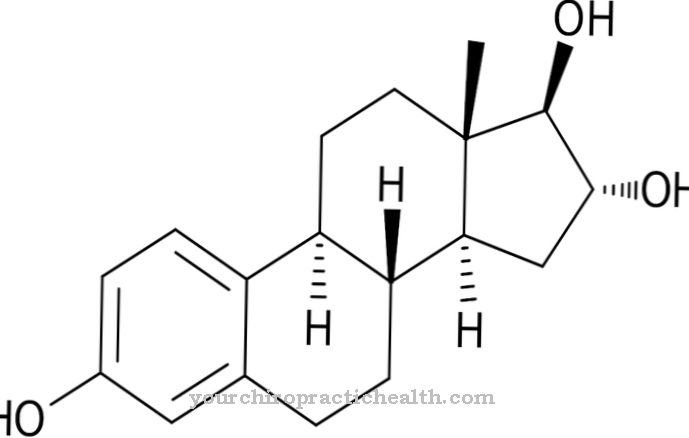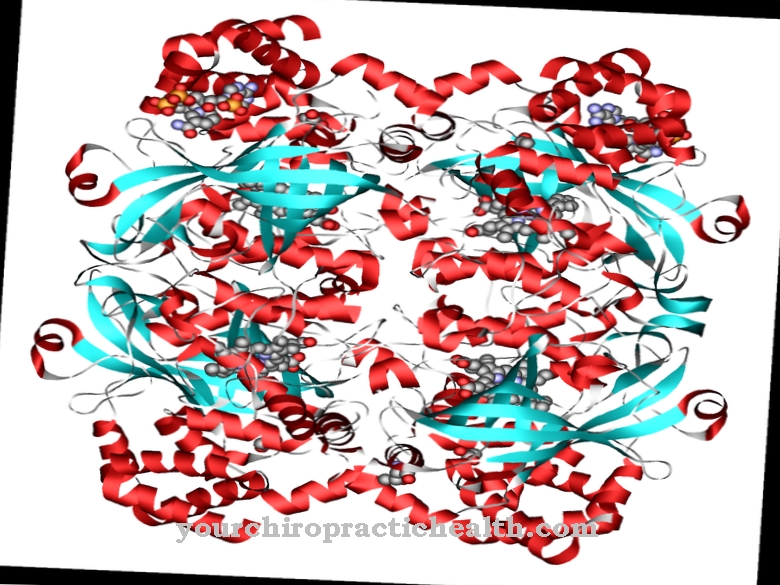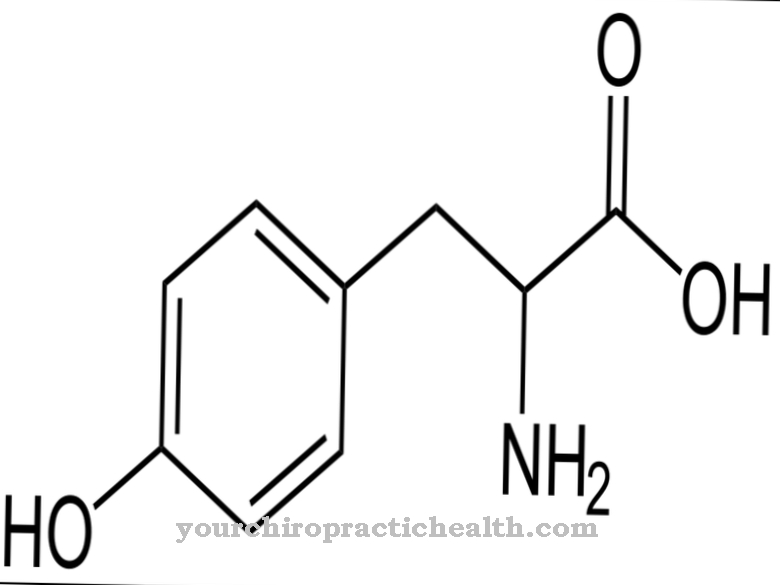Endorphins are opioid peptides synthesized by the body itself, which have an influence on pain and hunger sensations and are very likely to trigger euphoria. It is certain that endorphins in painful emergency situations and z. B. be released from the pituitary gland and hypothalamus during endurance sports with maximum performance. It is very likely that endorphins are released as part of the active reward system even after positive experiences.
What are endorphins?
The term endorphin is an acronym composed of the syllable endo, synonymous with inside and the noun morphine. The term is intended to indicate that it is a substance that is similar to morphine and is produced internally, i.e. by the body itself. Indeed, three different endorphins, alpha-, beta and gamma-endorphins, are known which are synthesized in the pituitary and hypothalamus when needed.
They are neuropeptides with known amino acid sequences.The endorphins, also called opioid peptides, bind as neurotransmitters to the same receptors as opiates and thus inhibit the activity of pain-transmitting neurons. This means that the pain information, which all converge in the spinal cord in order to be forwarded from there to the brain, is no longer fully reported to the brain. In addition to the pain-relieving effect, endorphins play an important role in the reward system.
The connection has not yet been adequately scientifically clarified. It is very likely that endorphins, in their capacity as neuromodulators, can activate the synthesis of the so-called happiness hormone dopamine.
Anatomy & structure
Endorphins are produced by the body itself when needed. These are substances that can dock on the opioid and opiate receptors of the synapses, which transmit pain-transmitting afferent neurons, like natural opiates, and lead to a reduction in the pain signal to the brain. Since the endorphins consist of short-chain peptides, i.e. a string of amino acids via peptide bonds, they are also known as opioid peptides.
Endorphins arise in the pituitary gland and in the hypothalamus and are formed there by the breakdown and breakdown of proenkephalin A and B and from the breakdown and conversion of proopiomelanocortin. Enkephalins are endogenous pentapeptides that consist of a sequence of five amino acids and each differ by the 5th amino acid. Like long-chain proteins, the neuropeptides are synthesized from a sequence of amino acids determined by genes.
Proopiomelanocortin is a prohormone, i.e. hormone and protein inactivated by a changed spatial structure, which is not only synthesized in the pituitary gland and the hypothalamus, but also in placenta cells and in certain epithelial cells. It can be converted into alf, beta and gamma endorphins in the pituitary gland and hypothalamus and converted into the active form.
Function & tasks
Put simply, pain sensations represent an important protective function of the body. Nociceptors in certain tissues report “pain” when lesions have occurred or threatened lesions, in order to signal that an injury has already occurred or an injury is imminent. This means that people learn from this to avoid such situations in the future or to stop a process that could lead to injury.
However, situations are also conceivable in which injuries or lesions must be tolerated in order to save the individual as a whole. This can e.g. This could be the case, for example, when escaping from a burning tunnel or when trying to reach a rescue station despite severe injuries such as a broken leg or open wounds. In these and similar cases, the protective function of pain can prove to be counterproductive. In such situations, our body can release endorphins in order to temporarily suppress pain sensations and at the same time to generate euphoric, fear-suppressing feelings.
While the biochemical process of pain suppression can be explained well, the processes around the generation of euphoric feelings through endorphins are not yet sufficiently understood. The release of endorphins can also be activated by strong imagination. Long-distance runners know the problem that after a certain time pain sets in and the motivation to continue running comes under pressure. The body tries to get the athlete to give up. However, many long distance runners manage to overcome the situation by imagining the positive effects of persevering.
The body then turns around and pours out endorphins, the pain is reduced and euphoric feelings set in. In addition, it is also discussed that endorphins play an important role in establishing the balance between the neurotransmitters serotonin and dopamine within the dopaminergic reward system, even in normal daily situations.
You can find your medication here
➔ Medicines against depressive moods & to lighten the moodDiseases
Diseases and complaints that are related to endorphins are based either on a pathologically reduced release of the body's own opioid or the receptors of the synapses to which the endorphins are supposed to dock show functional disorders. The effects are comparable in both cases, and the boundaries to pathological behavior that can be triggered by a reduced release of endorphins are fluid.
For a few years now, diagnosed diseases such as borderline personality disorder (BPD) and self-harming behavior (SVV) as well as anorexia have been associated with a disturbed or reduced release or reduced effectiveness of endorphins. Self-harming behavior can develop into an addiction in those affected, because the self-harm causes the release of endorphins in the short term and triggers positive feelings in the short term. Similar mechanisms come into play in anorexia and BPD. It is very likely that those affected do not want to punish themselves, but are looking for reward from happiness hormones.
























.jpg)



